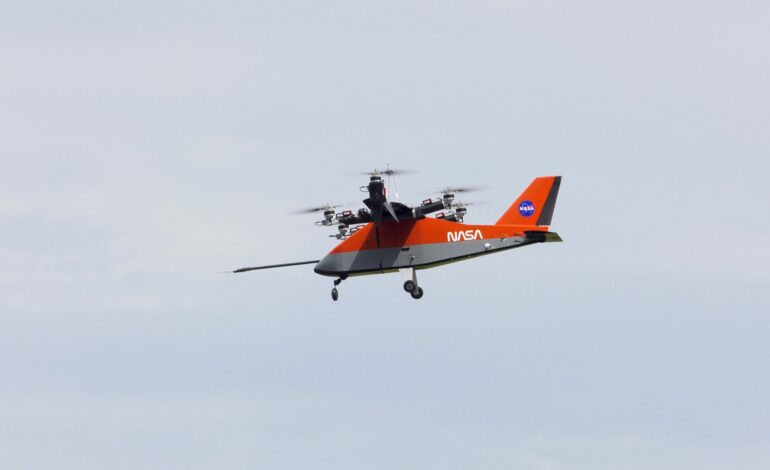NASA Advances Air Taxi Technology with New Flight Tests

NASA is making strides in air taxi technology through rigorous testing of a new research aircraft designed to enhance flight control systems. The project, known as the Research Aircraft for electric Vertical takeoff and landing Enabling techNologies Subscale Wind Tunnel and Flight Test (RAVEN SWFT), underwent its latest free flight test on April 22, 2025, at the City Environment Range in Hampton, Virginia.
This scaled-down aircraft, which closely resembles an air taxi, is part of NASA’s effort to gather vital data that will aid manufacturers in developing their own designs. As the air taxi industry evolves, engineers require comprehensive real-world data to refine flight dynamics and ensure optimal safety in varying conditions.
Siena Whiteside, the project lead, emphasized the importance of NASA’s research, stating, “NASA’s ability to perform high-risk flight research for increasingly automated and autonomous aircraft is really important.” The tests aim to push the aircraft to its limits to understand its behavior during unforeseen events, such as when a motor fails. The data collected will be publicly available, benefiting the broader aviation community.
Testing Process and Aircraft Specifications
The RAVEN SWFT is a compact aircraft weighing just 38 pounds with a wingspan of six feet. It features 24 independently moving components known as “control effectors,” which adjust during flight to influence the aircraft’s motion. This configuration makes the RAVEN SWFT an ideal platform for advanced flight control and autonomous flight research.
Testing began in 2024 at NASA’s Langley Research Center, where researchers utilized the 12-Foot Low-Speed Tunnel to simulate real flight conditions. Following wind tunnel tests, the team transitioned to remote piloting free flights, allowing them to collect significant data on the aircraft’s performance.
Insights gained from wind tunnel operations helped mitigate risks during actual flights. The team was able to refine the aircraft’s control software in real-time, implementing changes in under five minutes. This rapid adjustment capability has accelerated the testing process and enhanced data collection efficiency.
Collaborations and Future Developments
NASA developed the flight control software for the RAVEN SWFT in partnership with MathWorks under a Space Act Agreement. This collaboration aims to streamline the design and testing phases of flight control systems applicable to future aircraft.
Looking ahead, the RAVEN SWFT is expected to serve as a precursor to a larger aircraft model, envisioned to weigh around 1,000 pounds. This larger version, developed in conjunction with the Georgia Institute of Technology, will not only resemble an air taxi but also facilitate acoustic research to evaluate the noise produced by such aircraft.
By carrying out these flight research initiatives, NASA aims to advance the United States’ leadership in the development of safe, quiet, and affordable advanced air mobility operations. The data generated from these tests will be made publicly available, fostering collaboration and innovation across the aviation sector.
As the air taxi industry prepares for future integration into urban environments, NASA’s ongoing research and transparency will play a crucial role in shaping the technological landscape of air transportation.






